I think most writers are natural-born eavesdroppers, curious nosey-parkers with enquiring minds. Like squirrels hoarding nuts for the winter, we store snippets of overheard conversations or amusing anecdotes to transform and embellish into something far more intriguing. So, imagine working as a small town journalist – the stories you could tell! This week I am joined by Joan Livingstone who talks about how her former job influences her writing.
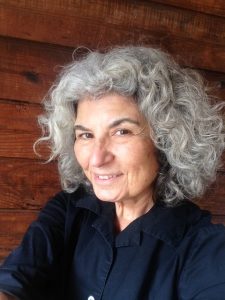 How Journalism Shaped My Fiction
How Journalism Shaped My Fiction
Isabel Long, the protagonist of my new mystery, Redneck’s Revenge, was a former long-time journalist before she became a private investigator. So was I although I didn’t become a P.I. I write about one.
Redneck’s Revenge is the second in my Isabel Long mystery series. The first was Chasing the Case, which was released last spring.
Both books are set in the small, rural hilltowns of Western Massachusetts, where I got my start in the newspaper biz. I was hired as a correspondent — paid by the inch — to cover the hilltown where I lived, Worthington, Massachusetts, population 1,200.
I had no previous experience, but that didn’t seem to matter to the editor who hired me. The experience grew into a 30-year career that ended after I was the managing editor of an award-winning newspaper in New Mexico, The Taos News.
But back to the start, I reported first on Worthington and eventually I covered several towns, plus did regional stories. I loved breaking a news story and getting to know what people did. I went to town meetings and covered what interested the community from truck pulls to school events to country fairs. I covered fires and what little crime there was. I did profiles. A few of my stories went national. I even went to the White House.
One of the greatest benefits was listening to the way people talked and writing it down. I believe it has paid off with realistic dialogue in my fiction.
It also gave me insight into how people behave, and certainly I had a total immersion into the hilltowns of Western Massachusetts, which I use as a setting for much of my fiction.
By the way, since Isabel snagged a bunch of cold case files from her newspaper, it was an opportunity for me to write news stories again — although for made-up subjects.
Here’s the start of one with the headline: Caulfield man dies in house fire.
CAULFIELD — A Caulfield man died when his house burned to the ground in an overnight fire discovered by his daughter Wednesday morning.
Officials are investigating the blaze that killed Chester “Chet” A. Waters IV, 69, who ran a junkyard and a vehicle repair shop on his Maple Ridge Road property located on one of the town’s back roads.
Caulfield Fire Chief Roger Dickerson said no one called in the blaze because of the home’s remote location and the time the fire apparently broke out. He said Annette Waters found her father’s body when she arrived to work in his garage.
Back to Isabel, who also covered the hilltowns of Western Massachusetts until, like me, she moved up to being an editor. She lost her job managing a newspaper when it went corporate. (To set the record straight, that didn’t happen to me.) In Chasing the Case, Isabel decided to revisit her first big story as a rookie reporter — when a woman went missing 28 years earlier from the fictional town of Conwell.
She relies on the skills she used as a journalist for that case and the one she has in Redneck’s Revenge, especially since it takes her to an unfamiliar town and group of people.
So what skills would Isabel find transferable? Certainly, breaking down the elements of a story and figuring out who to contact. Good interview skills are a must. Developing a network of sources for tips is another. And she’s got to be good kind of nosy.
Here I’ll let Isabel explain. She and her ‘Watson’ — her 92-year-old mother who lives with her — have just finished meeting with Annette Waters who wants to hire Isabel to find out how her father, Chet Waters, died. The cops say he was passed-out drunk when his house burned to the ground. Annette says he was murdered.
“What’s your gut feeling?” I ask my mother when we’re done.
“Gut feeling? There’s definitely something there. But I’m not sure what it is at this point.”
“I agree. But even though this happened only three years ago, it’s gonna be harder to crack this case. I don’t know anybody here.”
“What did you do when you had to report on a story in a place where you didn’t know anybody?”
“I followed the leads I had. One person led me to another. Yeah, yeah, I hear you. I should do the same for this one. Well, I have Annette to start me off.”
And there are times when a journalist has to be a bit brave. For Isabel, that means talking with somebody who has something to hide — like maybe murdering another person. By the way, she’s really good at that.
Joan Livingston Bio
Joan Livingston is the author of novels for adult and young readers. Redneck’s Revenge, published by Crooked Cat Books, is the second in the mystery series featuring Isabel Long, a longtime journalist who becomes an amateur P.I. The first is Chasing the Case.
An award-winning journalist, she started as a reporter covering the hilltowns of Western Massachusetts. She was an editor, columnist, and most recently the managing editor of The Taos News, which won numerous state and national awards during her tenure.
After eleven years in Northern New Mexico, she returned to rural Western Massachusetts, which is the setting of much of her adult fiction, including the Isabel Long series.
Joan Livingston on social media:
Website: www.joanlivingston.net.
Facebook: www.facebook.com/JoanLivingstonAuthor/
Twitter: @joanlivingston
Instagram: www.Instagram.com/JoanLivingston_Author
Goodreads: www.Goodreads.com/Joan_Livingston
Book links to Chasing the Case and Redneck’s Revenge:
http://mybook.to/chasingthecase
http://mybook.to/rednecksrevenge

ISABEL LONG’S SECOND CRIME MYSTERY
REDNECK’S REVENGE
Her next case. She’s in it for good.
Isabel Long is in a funk months after solving her first case. Her relationship with the Rooster Bar’s owner is over. Then cops say she must work for a licensed P.I. before working solo.
Encouraged by her Watson — her 92-year-old mother — Isabel snaps out of it by hooking up with a P.I. and finding a new case.
The official ruling is Chet Waters, an ornery so-and-so, was passed out when his house caught fire. His daughter, who inherited the junkyard, believes he was murdered. Topping the list of suspects are dangerous drug-dealing brothers, a rival junkyard owner, and an ex-husband.
Could the man’s death simply be a case of redneck’s revenge? Isabel is about to find out.
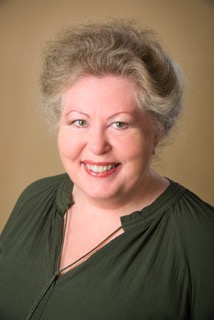
 The Secret Garden by Frances Hodgson Burnett
The Secret Garden by Frances Hodgson Burnett Sylvester by Georgette Heyer
Sylvester by Georgette Heyer The Morning Gift by Eva Ibbotson
The Morning Gift by Eva Ibbotson Carpe Jugulum by Terry Pratchett
Carpe Jugulum by Terry Pratchett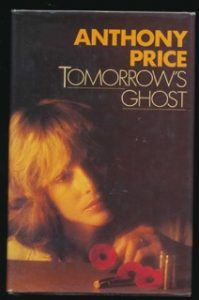 Tomorrow’s Ghost by Anthony Price
Tomorrow’s Ghost by Anthony Price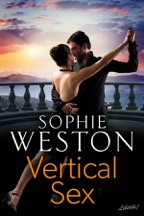




 The first of these is a classic: ‘The Prophet’ by the Lebanese author and poet Kahlil Gibran. The wisdom and melody of this little book never fails to bring me peace when I am in low spirits and comfort in times of distress. If I could save only one book in my house, this would be it.
The first of these is a classic: ‘The Prophet’ by the Lebanese author and poet Kahlil Gibran. The wisdom and melody of this little book never fails to bring me peace when I am in low spirits and comfort in times of distress. If I could save only one book in my house, this would be it. Next, and very close to the top of the list is a very different piece of writing: ‘The Lost Continent’ by the American author Bill Bryson. Bryson lived and taught in the UK for many years, but hails from Des Moines Iowa. After his father’s death, he decided to take a road trip through the USA. This would allow him to visit the places he remembered visiting with his parents. All was not as he remembered it. He remembered the America into which I was born in the 1950s and 60s. Things have moved on and he describes things that were and those that now are with a wit and lightness of touch that no matter how often I read this book, it makes me laugh out loud.
Next, and very close to the top of the list is a very different piece of writing: ‘The Lost Continent’ by the American author Bill Bryson. Bryson lived and taught in the UK for many years, but hails from Des Moines Iowa. After his father’s death, he decided to take a road trip through the USA. This would allow him to visit the places he remembered visiting with his parents. All was not as he remembered it. He remembered the America into which I was born in the 1950s and 60s. Things have moved on and he describes things that were and those that now are with a wit and lightness of touch that no matter how often I read this book, it makes me laugh out loud. Third on my list must come a book of poetry that I discovered quite by accident. I gave it to my mother-in-law for her sixtieth birthday, simply because of the title ‘Now We Are Sixty’. It is a compilation of poems by the English poet Christopher Matthews and illustrated by David Eccles. The poems are after those by A.A.Milne in his children’s book of poetry, ‘Now We Are Six’ but with a twist to reflect the thoughts and issues faced by older readers. I have been enjoying these poems since my early thirties, but even now, as I get ever closer to being part of the target audience, the book and its illustrations make me smile.
Third on my list must come a book of poetry that I discovered quite by accident. I gave it to my mother-in-law for her sixtieth birthday, simply because of the title ‘Now We Are Sixty’. It is a compilation of poems by the English poet Christopher Matthews and illustrated by David Eccles. The poems are after those by A.A.Milne in his children’s book of poetry, ‘Now We Are Six’ but with a twist to reflect the thoughts and issues faced by older readers. I have been enjoying these poems since my early thirties, but even now, as I get ever closer to being part of the target audience, the book and its illustrations make me smile. As my list gets closer to its end, the choices, inevitably get harder, and my fourth choice is not an obvious one. The reason I feel obliged to include it is because it was the first adult book that my daughters recommended to me. It is ‘No Time for Goodbye’ the best-selling novel by Canadian author Linwood Barclay. I enjoy this book very much and return to it for inspiration now, because it is the first thriller I ever read where I was aware of humour in the writing. It is also a very clever story. Although my fondest memory of this novel is no doubt caused by the literary ‘coming of age’ of my daughters, since reading ‘No Time for Goodbye’ for the first time, I have met Linwood on a couple of occasions. He, like his novels, is intelligent, interesting and amusing. I have enjoyed all his books that I have read, but this one is my favourite.
As my list gets closer to its end, the choices, inevitably get harder, and my fourth choice is not an obvious one. The reason I feel obliged to include it is because it was the first adult book that my daughters recommended to me. It is ‘No Time for Goodbye’ the best-selling novel by Canadian author Linwood Barclay. I enjoy this book very much and return to it for inspiration now, because it is the first thriller I ever read where I was aware of humour in the writing. It is also a very clever story. Although my fondest memory of this novel is no doubt caused by the literary ‘coming of age’ of my daughters, since reading ‘No Time for Goodbye’ for the first time, I have met Linwood on a couple of occasions. He, like his novels, is intelligent, interesting and amusing. I have enjoyed all his books that I have read, but this one is my favourite. Last on my list, is another book by an American author, Mitch Albom. I have read several books by Mitch Albom and his best known is probably the non-fiction work, ‘Tuesdays with Morrie’, which is fascinating. However, my favourite work by this author is a fictional piece, ‘The Five People you meet in Heaven’. It re-affirms my belief that all of us have a part to play in this crazy world, it just may not be obvious what that part is to be. I always read this book within a day and I always end up in floods of tears, but feeling peaceful. I find it an inspirational work because it promotes so much thought.
Last on my list, is another book by an American author, Mitch Albom. I have read several books by Mitch Albom and his best known is probably the non-fiction work, ‘Tuesdays with Morrie’, which is fascinating. However, my favourite work by this author is a fictional piece, ‘The Five People you meet in Heaven’. It re-affirms my belief that all of us have a part to play in this crazy world, it just may not be obvious what that part is to be. I always read this book within a day and I always end up in floods of tears, but feeling peaceful. I find it an inspirational work because it promotes so much thought. Val Penny is an American author living in SW Scotland. She has two adult daughters of whom she is justly proud and lives with her husband and two cats. She has a Law degree from Edinburgh University and her MSc from Napier University. She has had many jobs including hairdresser, waitress, lawyer, banker, azalea farmer and lecturer. However she has not yet achieved either of her childhood dreams of being a ballerina or owning a candy store. Until those dreams come true, she has turned her hand to writing poetry, short stories and novels. Her crime novels, ‘Hunter’s Chase’ and Hunter’s Revenge are set in Edinburgh, Scotland, published by Crooked Cat Books. The third book in the series, Hunter’s Force, follows shortly.
Val Penny is an American author living in SW Scotland. She has two adult daughters of whom she is justly proud and lives with her husband and two cats. She has a Law degree from Edinburgh University and her MSc from Napier University. She has had many jobs including hairdresser, waitress, lawyer, banker, azalea farmer and lecturer. However she has not yet achieved either of her childhood dreams of being a ballerina or owning a candy store. Until those dreams come true, she has turned her hand to writing poetry, short stories and novels. Her crime novels, ‘Hunter’s Chase’ and Hunter’s Revenge are set in Edinburgh, Scotland, published by Crooked Cat Books. The third book in the series, Hunter’s Force, follows shortly.
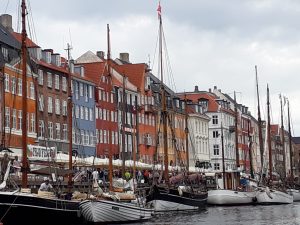 Although travel is my thing, cruising isn’t. I like to think I’m a feisty, independent explorer, but sometimes a bargain is too good to miss and cruising is a good way to see a lot of places in a short space of time. Our first port of call was Copenhagen, a beautiful city we’d always intended to visit while we were living nearby in the Netherlands but never quite got round to.
Although travel is my thing, cruising isn’t. I like to think I’m a feisty, independent explorer, but sometimes a bargain is too good to miss and cruising is a good way to see a lot of places in a short space of time. Our first port of call was Copenhagen, a beautiful city we’d always intended to visit while we were living nearby in the Netherlands but never quite got round to.










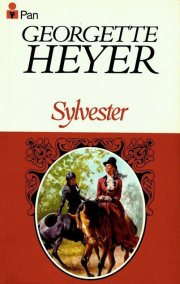 An historical novel – Sylvester or The Wicked Uncle by Georgette Heyer
An historical novel – Sylvester or The Wicked Uncle by Georgette Heyer

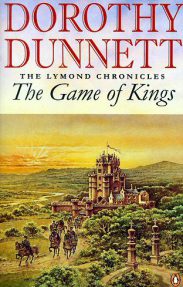

 THE ROAD TO NEWGATE
THE ROAD TO NEWGATE

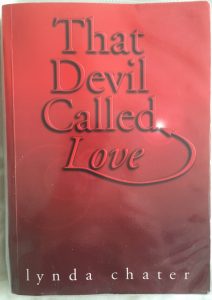 That Devil Called Love, by Lynda Chater
That Devil Called Love, by Lynda Chater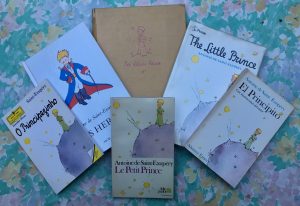 The Little Prince (Le Petit Prince), by Antoine de Saint-Exupéry
The Little Prince (Le Petit Prince), by Antoine de Saint-Exupéry The Daughter of Time, by Josephine Tey
The Daughter of Time, by Josephine Tey The Richard Stilgoe Letters, by Richard Stilgoe
The Richard Stilgoe Letters, by Richard Stilgoe


